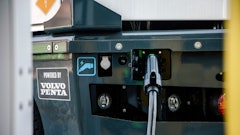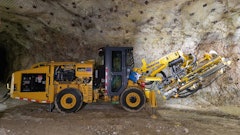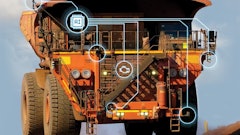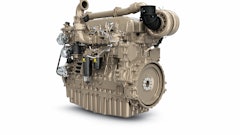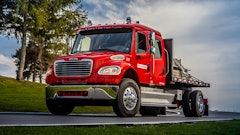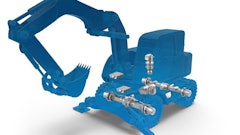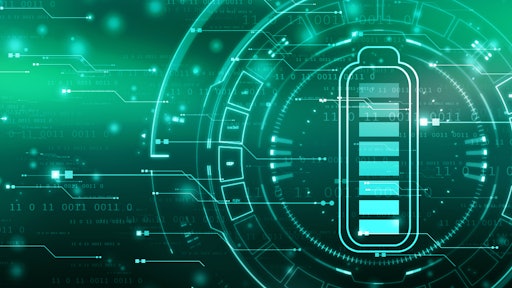
As we stand on the threshold of a new era in vehicular technology, the off-highway sector, comprising heavy-duty machinery used in material handling, construction, agriculture, mining and more, is experiencing a paradigm shift toward electrification.
This transition toward electric powertrains is catalyzed by various factors, from meeting decarbonization and sustainability goals to improving vehicle performance. Yet, despite electrification’s many benefits, adoption rates vary greatly among off-highway vehicles and trail well behind passenger EVs. Projections estimate the passenger EV market size to exceed $1 trillion in 2030, whereas off-highway electric vehicles (OHEVs) will linger at $37.5 billion.
To OEMs in the off-highway space, this disparity between segments is nothing new. Logistical challenges abound — from high-demand duty cycles that drain batteries to zero mid-shift to the losses accrued from extensive downtime while charging.
But what if opportunistic, fast or wireless charging solutions overcame those challenges and made it easier for OHEVs to maintain uptime comparable to diesel-powered counterparts? This would certainly pave the way for broader acceptance and implementation across off-highway applications.
Opportunity Charging: Keeping Vehicles Powered
For decades, EVs have been forced to conform to stationary, external charging station designs, with charging logistics continually posing the most significant hurdle to OHEV adoption. Opportunity charging technology now takes advantage of brief downtime during the workday to recharge the vehicle's battery and strategically maximize OHEV operation time.
This type of charger is well-suited to OHEVs with sporadic usage patterns. Idle moments, such as operator shift changes, lunch breaks and loading or unloading times, can be transformed into charging opportunities.
Note the benefits of opportunity charging:
- Improves vehicle utilization and productivity per duty cycle
- Frequent recharging allows for smaller, lighter battery packs
- Enables multishift operations via opportunistic top-ups
- Eliminates the need for manual battery swapping
Since opportunity chargers cut off at 80% charge, they may serve as a viable option for extending the work life of aging batteries that can no longer reach full charge.
In general, opportunity charging is best suited for lithium-ion batteries, which have an inherently faster charging potential. Li-ion also emerges as the ideal choice for opportunity charging thanks to resilience against stress caused by increased charging rates and the resulting battery life reductions it causes. Conversely, lead-acid battery packs are particularly susceptible to the effects of this stress as they require a fully saturated charge to keep them in good condition.
In either case, all batteries charged this way still require a standard full charge at least once a week to equalize and maintain battery health.
Fast Charging Solutions for Rapid Energy Top-Up
At its core, fast charging relies on higher power levels to achieve quicker energy transfer compared to standard charging methods.
While a typical Level 2 charger might deliver power at rates up to 19 kilowatts (kW), fast chargers utilize direct current (DC) to provide power from 50 kW to over 350 kW, depending on the charger and vehicle capabilities. This substantial power increase allows the vehicle's battery to be charged in a fraction of the time it would take with traditional chargers.
This increased charging speed offers several benefits:
- Drastically reduces charge time from 4 hours to 10 hours down to 20 minutes to 60 minutes, on average
- Reduces charging downtime that translates to increased operating time
- Eliminates the need for dedicated battery charging rooms
- Improves return on investment by freeing up time and on-site space for revenue-generating operations
Fast charging admittedly brings its own logistical challenges. OEMs must consider the charging infrastructure of intended application zones, and DC charging places increased demand on the electrical grid.
However, governments worldwide help address this challenge via massive investments in public charging infrastructure, such as the $7.5 billion the U.S. is dedicating toward adding more than 500,000 chargers. Greater public charging availability helps create economies of scale, driving down costs for private fleet charging infrastructure. Private implementation of chargers can be accompanied by energy generation and storage infrastructure like rooftop solar panels for additional cost savings and greater resilience against price fluctuations.
The equipment itself also must support fast charging, often requiring larger, costlier chargers and cabling. However, these components can be used to achieve cost reductions and additional value for OEMs, owners and operators. For example, improving energy transfer and storage efficiency to support fast charging also helps reduce battery sizes (reclaiming onboard space for auxiliary systems) and the amount of thermal regulation equipment required.
Onboard Charging: Convenience & Versatility
Central to the broader landscape of off-highway electrification, onboard charging systems outfit the vehicle with convenience. With an onboard charger, OEMs can leverage the existing electrical grid from anywhere at any time.
Modern onboard chargers from reputable companies are characterized by compactness, robustness and a rugged design built to withstand harsh conditions across industrial applications, such as vibration, extreme temperatures, moisture and dust.
Consider just a few additional benefits of utilizing onboard chargers:
- Convenient and cost-efficient, eliminating the need for costly external charging systems
- Efficient charging fine-tuned for the vehicle’s specific battery
- Built-in safety measures to prevent overcharging or electrical hazards
- Versatility to charge anywhere an electrical outlet is present
These benefits are especially profound when working with high-power equipment or in remote settings where access to specialized charging infrastructure may be limited or nonexistent.
Of course, with such conveniences come practical considerations. Integrating charging systems into the vehicle itself increases design and validation complexities. This includes space and weight considerations, which may be particularly impactful for ultra-compact OHEVs. Lastly, the compact and rugged design often cannot offer the same power output as external chargers purpose-built for rapid charging.
Yet these considerations may merely require other engineering adjustments. For example, switching from passive, air-cooled heatsinks to an electrical fan or liquid cooling system improves performance while eliminating configuration concerns. As system configurations become less impactful on performance, they can be optimized for space and weight savings rather than the necessary airflow.
Wireless Charging: Contactless Energy Transfer
Sometimes referred to as inductive charging, wireless charging operates on the principle of electromagnetic induction, where an electric current generates a magnetic field in a transmitter coil that, in turn, induces a voltage in a receiver coil located within the vehicle.
The basic setup of a wireless charging system for OHEVs includes a ground or wall pad that houses the transmitter coil that is connected to the electricity supply, as well as a vehicle pad (the receiver coil) installed on the vehicle. When the vehicle is positioned over the ground pad, the charging process begins automatically, guided by alignment systems or magnetic resonance coupling that allows for a small degree of misalignment.
Previously seen as something with only niche applications, wireless charging does offer potential benefits:
- Eliminates the need for manual plug-ins, paving the way for automated vehicle applications
- Allows for charging outdoors or in challenging environments such as mines or construction sites
- Heightened safety due to the absence of exposed, potentially live cables and wiring
Despite its promising advantages, wireless charging technology faces several limitations that currently inhibit its widespread adoption.
One of the primary challenges is the relatively lower efficiency compared to wired charging. Energy losses occur during the transfer between the ground pad and the vehicle pad, which can mean that more electricity is required to achieve the same level of charge, potentially resulting in higher operational costs. Moreover, energy loss from inefficient transfer results in excess heat that risks damaging batteries. These losses further compound unless near-perfect alignment (less than 2 inches) between vehicle and pad is achieved. Lastly, wireless charging solutions are much more costly compared to conductive systems at the same power level.
Ultimately, the trade-offs brought by wireless charging must be evaluated with appropriate partners according to their importance for a given application to ensure these decisions result in net performance and total cost of ownership improvements. If wireless charging provides enough utility — as in environments with hazardous chemicals — or overall cost reductions to owners and operators, navigating these complexities offers a competitive advantage.
Embracing Diverse Charging Methods
Today, off-highway equipment OEMs have access to a diverse range of battery charging methods, architectures and technologies that support full fleet electrification. The benefits of doing so are immense: zero emissions, reduced noise, enhanced operator comfort, improved safety and lower cost of operation and ownership.
As battery charging systems continue their ascent from basic designs to cutting-edge innovations, the gap between commercial EVs and their off-highway counterparts will undoubtedly shrink.
By leveraging the most appropriate charging solutions for their specific applications, OEMs of off-highway vehicles can optimize the performance, flexibility and reliability of their electrified fleets — enhancing the long-term impact on business and sustainability initiatives.




